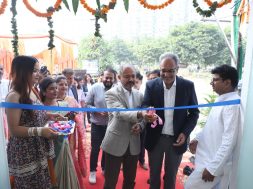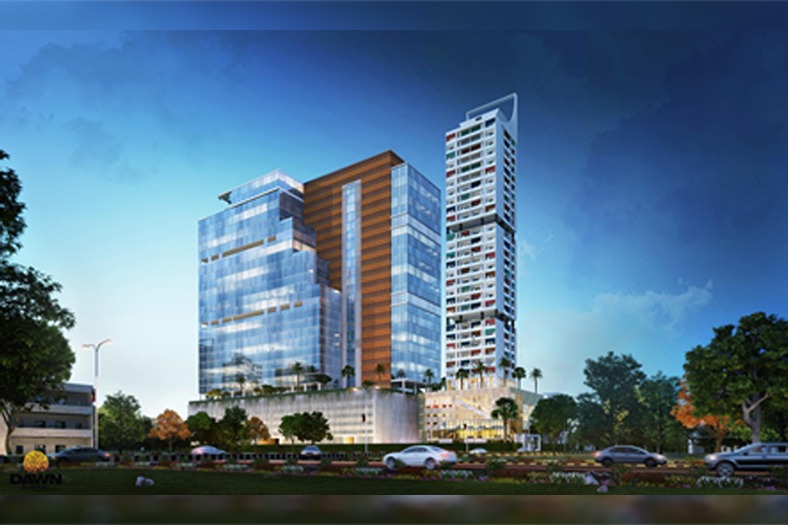Going green with glass
With the growing trend of green design, glass has become an indispensable material
Green architecture emphasizes the maximum use of natural daylight. No doubt, glass is an indispensable material for green building. Its transparency allows lighting to the interiors and integrates the interiors with the exteriors.
Approach green designIndia is focusing on going green like never before. A long list of Indian glazing firms strongly believes in building a sustainable habitat for the future. “In such a scenario, it is our responsibility as the world’s oldest and largest glazing solutions and building materials solutions provider to focus on ‘green’ in a holistic manner,” explains R Subramanian, Managing Director – Glass and Solutions, Saint-Gobain India Pvt. Ltd.
Ever since Saint-Gobain India-Glass Business (SGGI) starts its presence in India, it has expanded its horizons in creating indigenous products for the needs of the Indian resident, including aesthetics, functionality, experiential comfort and energy conservation.
Then there is Asahi India Glass Ltd. (AIS), India’s one of the leading integrated glass companies, which has been at the forefront of moving towards an eco-friendly future. “It has pioneered innovations in glass coating and processing technology to develop both single-glazed and double-glazed products with the best ‘green’ parameters,” remarks Somasundaram Senthilkumar, Business Head – Projects, AIS. “This is giving developers and architects greater choice and ability to explore possibilities. These solutions enhance the aesthetics, efficiency and economics of commercial and residential spaces, compared to conventional building materials.”
AIS is also popular for its 4G solutions which include glass selection, glass product, glass processing and glass integration. Its technical team conducts building simulations to help architects as well as consultants select the right building material and improve energy efficiency.
Important glass products for green designsFor greater choice and ability to explore newer possibilities, architects prefer single-glazed and double-glazed products. These solutions enhance the aesthetics and efficiency of commercial and residential spaces. They also present builders with viable, attractive and economical alternative to traditional building materials.
“Energy-efficient glass ranges from AIS, under the brand name of ‘Ecosense’, provide the benefit of reducing the heat gain in buildings due to its excellent energy-saving properties without compromising on the natural light coming inside the building or the brilliant aesthetics that add value to the façade,” says Mr Senthilkumar. “And in winter, they ensure solar gain. So that no matter what the season, people inside stay comfortable at all times. Using energy-efficient glass also helps in ensuring that the occupants of the home feel more comfortable.”
Ideal for solar and thermal insulating parameters, Ecosense combines aesthetics with environmental sensibility and conforms to all international and national green standards, making it the natural choice as a green building solution.
While talking about the effectiveness of the Saint-Gobain products and solutions, Mr Subramanian adds that they not only contribute to reduce the carbon footprint but also to create healthy living environments to ensure the well-being of any building’s residents. He continues, “With the larger picture in mind, Saint-Gobain has strategically focused on transforming all its products to contribute to sustainability and energy conservation, and the result is the largest range of sustainable products for buildings, being made locally available in India. Added to add, most of the Saint-Gobain products are ECBC compliant and GRIHA certified.”
India being a tropical country needs a glass solution that can let in abundant light and at the same time cut the heat ingress. Saint-Gobain’s range of advanced coated glass bring in excellent energy efficiency in façade glazing applications by letting in natural light but not heat. Similarly for interior applications, its lacquered glass products are completely devoid of VoCs and help keep the interior environment vibrant, safe and hygienic.
Achieving sustainability in architectureSustainable architecture only advocates best building practices in terms of design and execution. It does not suggest products or solutions. At a macro level, green codes (LEED/GRIHA) refrain from offering product solutions. They do not promote the usage of any material as a green building friendly product.
According to Mr Subramanian, “The focus should be in achieving sustainability from within which extends to the methodologies deployed for creating eco-friendly products. The other aspect is to spread the green word — increase awareness ongoing green. Today there is a strong need for knowledge and skills amongst stakeholders to go the sustainable way.”
He continues, “SGGI spearheads several initiatives in making this happen. We make energy-efficient products in the most eco-friendly way possible. On the knowledge and skills, a lot of empowerment activities are undertaken on ground: technical papers presentation in green building seminars, reaching out to large groups of stakeholders through website, enabling skilling in sustainable architecture through glass academy courses, and involving students of architecture and interior design through transparence design competition.”
While talking about green building norms like GRIHA and LEED, Mr Senthilkumar remarks, “These green building norms only give a broad framework for achieving sustainable and eco-friendly buildings, which is expected to have minimal disturbance on the environment thereby maintaining the harmony.
He continues, “The green concept is essentially a result of wanting to make the planet a safe and healthier place to live in. Energy is just one facet of the issues that are being addressed through this. The others include site selection, water conservation and recycling, material usage and indoor environmental quality.”
Benefits of glassGlass has a list of inherent benefits as a building material. These are:
The product is 100 per cent recyclable
The source of making glass is silica sand, which is available in abundance, avoiding the risk of resource depletion
It can offer a structural strength that is comparable with a brick wall coupled with very good sound insulation and fire rating
The product has the unique property of letting in natural light which is so essential for enhancing the living conditions inside the building
As it occupies less space, it gives more manoeuvrable space inside the building and also brings down the dead load weight of the building marginally
The embodied energy of glass is much lower when compared with aluminium, cement or paint. This is made possible because of improvement in manufacturing techniques and also of the long life span that glass offers.
LEED certification and poor model of energy efficiencyNothing is perfect and everything comes with its own drawbacks. All the ratings available today have their own pros and cons. “On a broader perspective, the ratings have to be taken as guidelines and benchmarks,” Mr Subramanian. “Going forward, the energy efficiency of the building largely rests on the running or maintenance of the building. A large part of this too rests on the integration of building products from the design stage itself. Today when becoming obsolete is a daily phenomenon, the available ratings are constantly undergoing changes to suit the dynamic ecosystem they are operating in.”
Achieving green buildings meant shelling out something extra. It is a combination of efficient designs and right products that will help improve the building performance, and everybody has a choice to use glass intelligently and live a green life.____________________________________Using energy-efficient glass also helps in ensuring that the occupants of the home feel more comfortable
Somasundaram Senthilkumar, Business Head – Projects, AIS_______________________________________________
The focus should be in achieving sustainability from within which extends to the methodologies deployed for creating eco-friendly products.
R Subramanian, Managing Director – Glass and Solutions, Saint-Gobain India Pvt. Ltd._____________________________________________
8
Cookie Consent
We use cookies to personalize your experience. By continuing to visit this website you agree to our Terms & Conditions, Privacy Policy and Cookie Policy.









